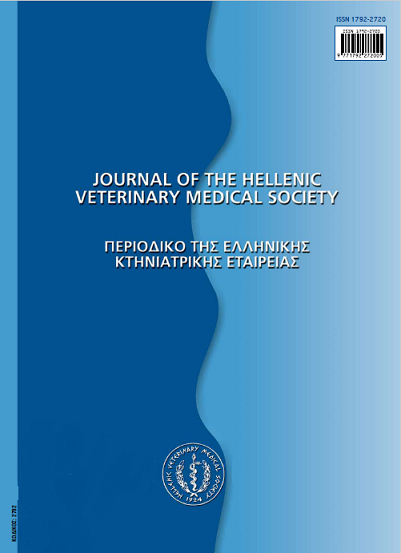Νομοθετικό πλαίσιο για τη διεξαγωγή πειραματικών πρωτοκόλλων με ζώα εργαστηρίου και για τη διαχείριση των πτωμάτων

Περίληψη
Υφίσταται συγκεκριμένο Νομοθετικό πλαίσιο, Εθνικό και Κοινοτικό, που περιβάλλει τη διεξαγωγή πειραμάτων με ζώα εργαστηρίου και εν συνέχεια τη διαχείριση των πτωμάτων τους. Ενδεικτικά για την Εθνική Νομοθεσία αναφέρεται το Προεδρικό Διάταγμα 160/1991 και ο Νόμος 2015/1992 σχετικά με την Επικύρωση της Ευρωπαϊκής Σύμβασης περί προστασίας των πειραματόζωων. Για την Κοινοτική Νομοθεσία, αντίστοιχα αναφέρεται η Οδηγία 86/609/ΕΟΚ, καθώς και η Σύσταση της Ευρωπαϊκής Επιτροπής Ε(2007)2525. Η τέλεση πειραματισμών με ζώα εργαστηρίου απαρτίζεται από τέσσερις εννοιολογικά πράξεις: το πεδίο εφαρμογής τους, την αδειοδότηση πειραματισμών (Reduction-Refinement - Replacement), τη σύσταση της επιτροπής ηθικής αξιολόγησης και τη Μέριμνα για την εκτίμηση της σχέσης κόστους/ευζωίας κατά τη λήξη των πειραμάτων (Cost benefit analysis). Οι στόχοι των προαναφερθέντων Νομοθεσιών είναι οι εξής: Πρωτίστως, η μείωση του αριθμού των υπό χρήση πειραματόζωων, η προσφορά μέριμνας σε αυτά και ο περιορισμός του φόβου και του πόνου τους, ενώ παράλληλα καταβάλλεται προσπάθεια για την αποφυγή άσκοπων επαναλήψεων των πειραματικών πρωτοκόλλων, καθώς και για την υιοθέτηση εναλλακτικών μεθόδων έρευνας. Τα πτώματα των ζώων εργαστηρίου (κατατασσόμενα ως ζωικά υποπροϊόντα) ανήκουν στην κατηγορία1 και διαχειρίζονται ανάλογα συμφωνά με την Κτηνιατρική Νομοθεσία (Ευρωπαϊκός Κανονισμός 1774/2002, Προεδρικό Διάταγμα 211/2006) μέσω των κάτωθι σταδίων: Αρχικά, συλλογή σε ειδικούς περιέκτες, αποθήκευση υπό ψΰξη, μεταφορά με εγκεκριμένα οχήματα και εν συνεχεία άφιξη σε εγκεκριμένη μονάδα για μεταποίηση και τελική διάθεση του υλικού ως απόβλητο με αποτέφρωση ή υγειονομική ταφή. Η ορθή διαχείριση τους τεκμηριώνεται με ποικίλα και καθορισμένα συνοδευτικά έγγραφα. Μπορούν,όμως, να διαχειρισθούν και μέσω της Νομοθεσίας Ιατρικών Αποβλήτων (ως επικίνδυνα - μολυσματικά - τοξικά απόβλητα/κατηγορία 2) με στάδια που λαμβάνουν χώρα εντός ή εκτός Υγειονομικών μονάδων (Υπουργική Απόφαση 8668/2007, Κοινή Υπουργική Απόφαση 24944/1159) ως εξής: Αρχικά, συλλογή σε κατάλληλη συσκευασία και αποθήκευση υπό ψΰξη. Εν συνεχεία, μεταφορά με ειδικά μέσα σε εγκεκριμένη εγκατάσταση για αποτέφρωση ή αποστείρωση και τελικά διάθεση μέσω υγειονομικής ταφής. Και αυτός ο τρόπος διαχείρισης των πτωμάτων τεκμηριώνεται με την ύπαρξη αντίστοιχων συνοδευτικών εγγράφων. Τόσο η Κτηνιατρική όσο και η Υγειονομική Νομοθεσία προβλέπει αυστηρές κυρώσεις για τους εκάστοτε παραβάτες. Το ισχύον Νομοθετικό πλαίσιο αποτελεί το οικοδόμημα πάνω στο οποίο στηρίζονται και εξελίσσονται οι προσπάθειες βελτίωσης της μέριμνας για την εκτίμηση της σχέσης κόστους/ευζωίας των ζώων εργαστηρίου, της αντικατάστασης των ζώων αυτών με εναλλακτικές μεθόδους έρευνας και φυσικά της εν γένει προστασίας του περιβάλλοντος μέσω της ορθής διαχείρισης/ιχνηλασιμότητας των πτωμάτων των συμμετεχόντων στους πειραματισμούς ζώων.
Λεπτομέρειες άρθρου
- Πώς να δημιουργήσετε Αναφορές
-
MONOGIOU (Ε. ΜΟΝΟΓΙΟΥ) E. (2017). Νομοθετικό πλαίσιο για τη διεξαγωγή πειραματικών πρωτοκόλλων με ζώα εργαστηρίου και για τη διαχείριση των πτωμάτων. Περιοδικό της Ελληνικής Κτηνιατρικής Εταιρείας, 60(3), 211–216. https://doi.org/10.12681/jhvms.14927
- Τεύχος
- Τόμ. 60 Αρ. 3 (2009)
- Ενότητα
- Special Article
Οι συγγραφείς των άρθρων που δημοσιεύονται στο περιοδικό διατηρούν τα δικαιώματα πνευματικής ιδιοκτησίας επί των άρθρων τους, δίνοντας στο περιοδικό το δικαίωμα της πρώτης δημοσίευσης.
Άρθρα που δημοσιεύονται στο περιοδικό διατίθενται με άδεια Creative Commons 4.0 Non Commercial και σύμφωνα με την άδεια μπορούν να χρησιμοποιούνται ελεύθερα, με αναφορά στο/στη συγγραφέα και στην πρώτη δημοσίευση για μη κερδοσκοπικούς σκοπούς.
Οι συγγραφείς μπορούν να καταθέσουν το άρθρο σε ιδρυματικό ή άλλο αποθετήριο ή/και να το δημοσιεύσουν σε άλλη έκδοση, με υποχρεωτική την αναφορά πρώτης δημοσίευσης στο J Hellenic Vet Med Soc
Οι συγγραφείς ενθαρρύνονται να καταθέσουν σε αποθετήριο ή να δημοσιεύσουν την εργασία τους στο διαδίκτυο πριν ή κατά τη διαδικασία υποβολής και αξιολόγησής της.


